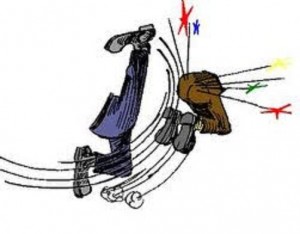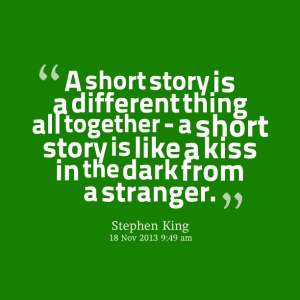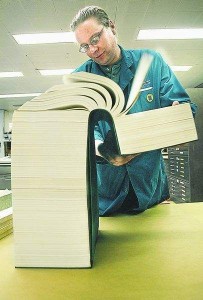Shaun Hunter’s post this week Calgary Through the Eyes of Writers features local author Betty Jane Hegerat’s novel Running Toward Home, about a foster child who finds himself trapped overnight at the Calgary Zoo. I don’t know if Shaun planned this post for Hallowe’en weekend, but a night alone in the zoo would be scary – or exciting! This is a Calgary novel I’ve read. Hegerat juggles five point of view narrators, who are all sympathetic, real and memorable.
Monthly Archives: October 2015
Blog Tour
My friend, Glenna Jenkins, is on a whirlwind virtual blog tour. Check out her site for many posts of interest to writers and readers. I’ve read Glenna’s book, Somewhere I Belong, and found it a well-written historical young adult novel with appeal to adult readers, especially for those like me with connections to The Maritimes. Somewhere I Belong is well-deserving of the praise it’s been receiving.
NaNoWriMo
For the first time, I’ve committed to National Novel Writing Month. I won’t be there for the Midnight Kickoff on Hallowe’en night, but the morning of Nov 1st I’ll begin my goal of writing 50,000 words during the month of November. I have been interested in NaNoWriMo for years, have encouraged others to look into it and the stars have finally aligned for my participation. November 1 was when I’d planned to plunge into my post-holiday writing and I feel a need for an outside boost. 
Meanwhile, I’m wrapping up some pre-NaNo projects, including my blog series about my writing journey. The posts will continue to run weekly on this site until November 17th. Check out today’s entry about my second stab at murder.
A Second Stab at Murder
In the early 2000s, some Calgary writers founded Mystery Writers INK, a writing group devoted to sharing technical information and skills for writing mystery stories. In 2003, as my short story binge drew to a close, I decided it was time for another stab at writing a murder mystery novel.
Over the years, I’d been mulling mystery novel premises and now settled on this: my protagonist would be Paula, a woman my age, with a similar background and living in Calgary’s Inglewood neighbourhood, where I’d spent many hours the past two years while serving as Alexandra Writers Centre Society president. Paula’s best friend from childhood is murdered near Paula’s home. Paula comes to suspect the killer is someone close to her friend.
That fall, I joined INK and wrote the story, using a method of continually throwing problems at Paula and raising questions that I’d need to resolve in future chapters. The resulting first draft was reasonably satisfying, if messy and pitted with plot holes.
 The speaker at my first INK session was an expert on guns. This was perfect for me, since a gun was my novel murder weapon. After the session, I pestered him about gun details specific to my story. He offered suggestions for relating different gun types and brands to my characters. The light in his eyes when he talked about guns inspired me to make a key character a gun nut.
The speaker at my first INK session was an expert on guns. This was perfect for me, since a gun was my novel murder weapon. After the session, I pestered him about gun details specific to my story. He offered suggestions for relating different gun types and brands to my characters. The light in his eyes when he talked about guns inspired me to make a key character a gun nut.
Later speakers included experts on poisons, fraud and art theft. My favourites were the police men and women who provided tips on how to get the police details right.
I revised my novel through three drafts, with help from several writing courses and a private critique group I’d formed with two friends from the Alexandra Writers Centre. I was about to start querying agents and publishers, when an INK session on story structure made me see that my novel’s structure was a little off. This prompted me to take an online mentorship through UBC’s Booming Ground program, which led to a year of challenging revision. At the end, I had a fourth draft that was almost ready. One last polish, and I sent out my first queries.
From the start, the response was better than it had been with my first book. After about 30 submissions and a few manuscript requests from agents and publishers, TouchWood Editions made an offer to publish Deadly Fall.
I was thrilled. It had me taken 20 years, with a considerable amount of rejection and hard work, but I’d finally achieved a major writing goal: my first published novel. 
Handling defeat in politics
Here’s a timely post about a Canadian election that happened almost one hundred years ago. I hope that Stephen Harper is finding such peace in his recent political defeat.
My Short Story Binge
As the millenium year approached, I had been writing for almost ten years with little to show for it besides my earlier travel features. I wanted publishing credits so I would feel like a real writer. They’d also be a selling point the next time I queried a novel.
During that first decade of mostly working on To Catch a Fox, I had written a few short stories. A couple of very shorts – 1,000 words or less – won or placed in the Calgary Writing Association’s annual writing contests. One of them was published by Green’s magazine in 2000. I also wrote two 5,000 word stories that were too long for most fiction markets. My short story ideas didn’t naturally fall into the most publishable zone of around 3,000 words. 
Today, I’d say even that was too long and, for publishability, would aim for 2,000-2,500 words, and perhaps less.
I decided to take two or three years off writing novels and focus on publishable short stories. By coincidence, my friend who had organized the novel critique group was now organizing one for short story writing. A group of us met in a church kitchen and traded stories every two weeks. There was no maximum or minimum number to bring. The organizer and I submitted the most over the two years; others shared only a few stories, saying they learned as much from critiquing.
For sure, this critique group inspired me to write short stories and my comrades’ comments were most helpful for revision. I can recall two stories for which someone suggested a title that nailed the story theme.
It amazed me that I could put my mind to a specific word count and write a story of around that length. I liked that short stories, unlike novels, could be written, critiqued in full, revised and polished within months, not years. Short stories were also a chance to play with characters, genres and ideas that I couldn’t sustain for a longer piece.
My first publishing success from the group arrived in 2002, when a humourous, magic-realism story was chosen for broadcast by CBC’s Alberta Anthology contest. It was a kick to hear my story read on the radio by a local actress. The CBC gave a me CD souvenir and paid well.
This plan to get published worked for most of my stories from this period, although it took longer than I had expected. After the critique group folded, I kept sending the stories out. About every year one would be accepted by a magazine or journal. One of the older 5,000 word stories, which I’d brought to the group for critique, won a contest with a high word count limit. During this short fiction writing phase, I also eeked out some poems, four of which were published.
Each acceptance or win gave me a mental boost, often, it seemed, just when I needed it to keep writing. Those positive outcomes acknowledged that someone out there in the world valued my work. The publishing credits led to opportunities, such as teaching short story courses at the Alexandra Writers Centre Society.
Another gain from my short story binge was the realization that I could start with a few details — characters, problem, setting and maybe an image –and they would evolve into an interesting and complex plot and resolution. If this worked for short stories, could it work for murder mystery novels? I believed now this was possible. 
My fantasy home in print
One thing I enjoyed about Will Ferguson’s novel 419 is that his heroine lives in my dream Calgary apartment, with a view and every convenience in her building lobby.
Critique
In 1996, through the Calgary writing grapevine, I heard about the Alexandra Writers Centre Society, a combination writers’ support group and independent school in the trendy Inglewood neighbourhood. Classes involved 5-8 students sitting around a table with an instructor. No marks or exams. The AWCS offered a novel workshop course that sounded right for my novel-in-progress.
During the 8 week course, my submissions received lots of critique that made me see how much more work was needed to make the book publishable. Like most writers starting out, I had believed completing a first draft meant the job was mostly done.
I took a second novel course with some of the same people from the class. When this course was finished, a woman in the class invited me to join a private critique group she was forming for people writing novels. The AWCS let us use one of their rooms for meetings. My work received more criticism. It hurt, but when I got home and reviewed the written remarks, the critique didn’t look so daunting. I found myself coming up with solutions to deal with readers’ problems.
A year or two passed. The critique group disbanded. I decided my book needed stronger critique and signed up for a correspondence course through the Saskatchewan Writers Guild. The course functioned like today’s online mentorships, except our exchanges were via snail mail.
My instructor began by reading the book’s first chapters, and maybe more. Her advice was to make the story a kind of detective search, with my protagonist, Julie, actively searching for her mother. In my existing draft, Julie went to Vancouver to search, but became distracted with a married man and other activities. The instructor’s suggestion makes sense to me now and it did then, but it was a drastic move that led to my re-starting To Catch a Fox from scratch. In the new version, Julie’s quest followed the Pacific Northwest coast from Vancouver to Oregon and ended in the British Columbia Interior. After 7-8 months, I had a new story that my instructor and I agreed was better than the earlier one.
Except, what should have been obvious hit me now: I had scrapped my novel-in-progress. After years of work, I had moved backwards, not forwards, and was facing another first draft that would require heaps of revision. For the first time since I started writing, I wanted to quit.
What pulled me out of the slump, ultimately, was sitting down at my keyboard and discovering that I enjoyed writing for its own sake, regardless of the result.
I revised my new manuscript, sought further critique, revised again and sent query submissions to publishers. A few complimented the writing or the story or the character’s voice, but no one requested the manuscript. After about twenty tries, I gave up and put the novel in the drawer.
In writing, as in everything, there’s a balance between perseverance and knowing when to pack it in. I wish I’d persisted less with this book and worked on other story ideas. I might have learned more about writing this way or even ended up with a book that got published.
Or maybe what happened was all part of the journey.
 I was certain To Catch a Fox was put to rest and I was fine with this. Most authors have one or two practice books in the drawer.
I was certain To Catch a Fox was put to rest and I was fine with this. Most authors have one or two practice books in the drawer.
I never dreamed the fox would leap out and bite me again.
Moving On
 In the mid-1990s I completed the 1,000 page draft of my first novel-in-progress. Realizing this was way too long, I ruthlessly edited it to half its length.Five hundred pages was still too much for a first novel that wasn’t epic fantasy or history, but it was closer to marketable length.
In the mid-1990s I completed the 1,000 page draft of my first novel-in-progress. Realizing this was way too long, I ruthlessly edited it to half its length.Five hundred pages was still too much for a first novel that wasn’t epic fantasy or history, but it was closer to marketable length.
Around this time, my husband’s company CP Rail moved the head office from Montreal to Calgary. Will’s job went with it. CP gave us a week in Calgary in early May to buy a house. After a couple of sunny, warm days, it started to snow and and didn’t let up. I still have images of cars skidding down the icy hills, which is partly why we bought in the city’s flatter south.
The next months were occupied with leaving Montreal, where we’d lived all our lives, and settling into a different city across the country, far from most of our family and friends.
I joined a book club at the local library and am now into my twentieth year as a member. In the Calgary Herald newspaper, I saw a notice for the Calgary Writers Association’s first meeting of the season in September. I went, with some concern about fitting in with a group of funky writers, and found the people looked about the same as ones I might meet in a church group. Evidently, lots of people like me were writing.
The CWA leader explained the season’s program: monthly speakers, monthly critique sessions and mingling with other writers during the breaks. I joined that night. After a couple of meetings, I decided it was time to get feedback on my novel-in-progress.
The critique sessions offered two options: an oral critique, where you read your work and the group commented on-the-spot, and a written critique, where you handed in work to two readers in advance. They’d give you a critique in writing and discuss their comments at the session. I chose option two, feeling it would be more valuable.
I expected the readers to criticize my writing, since I was a relative newbee to this. Instead, they were harder on my story content. One doubted she could ever sympathize with a woman having an affair with a married man. People around the table agreed. For some reason, this sticky wicket hadn’t occurred to me.
While there were positive comments, the critique was discouraging, but not enough to make me quit on my story. I was glad I had written the novel to the end so I wouldn’t be too swayed by others’ opinions.
As the CWA year progressed, I learned a lot about the writing world and made numerous writing acquaintances and several lasting friendships. Through the years they provided great support, as I continued to revise and struggle with my book.